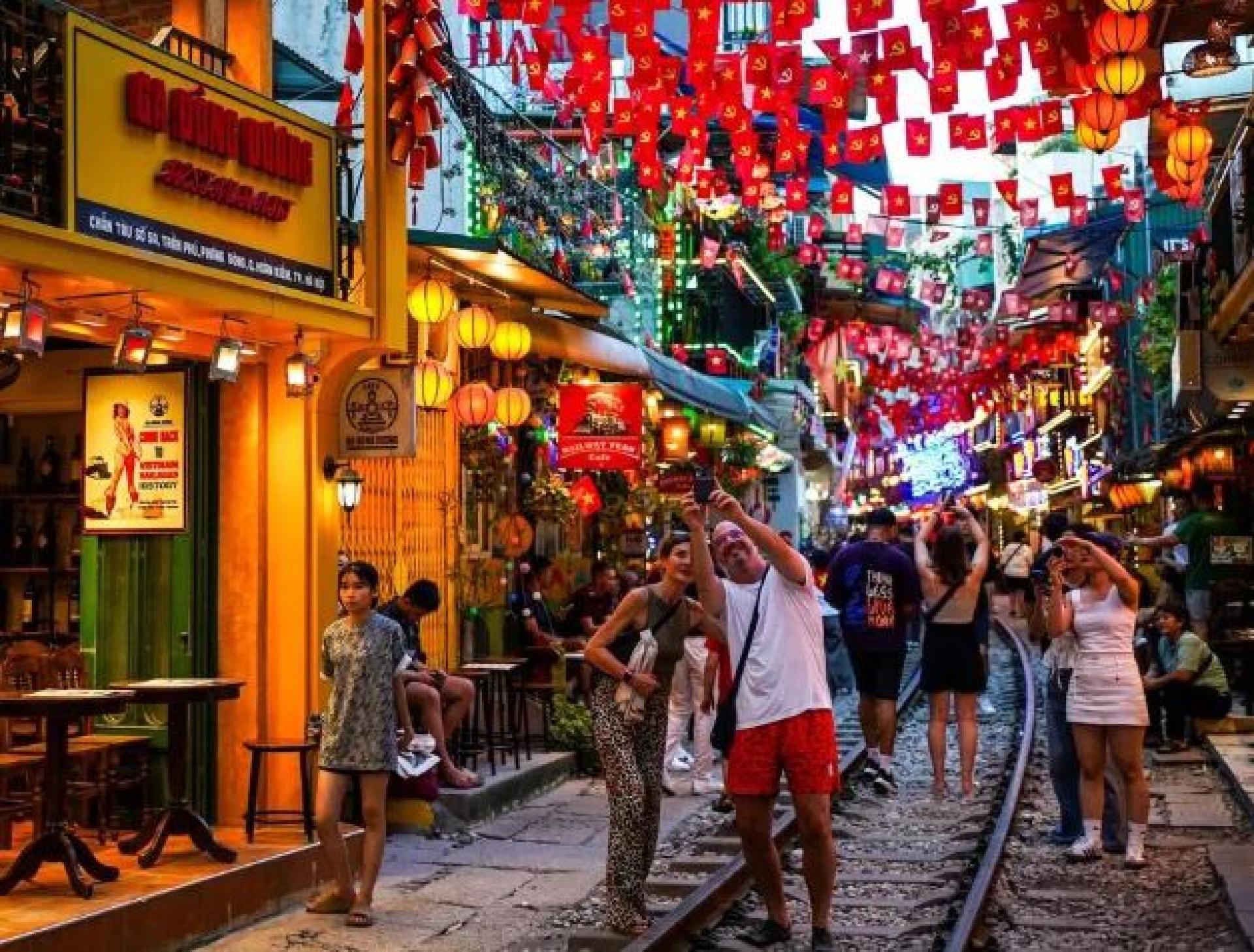(Hanoi, 17th) This year, Vietnam has welcomed more Chinese tourists than Thailand, becoming the most favored Southeast Asian destination for Chinese travelers, highlighting Vietnam’s enormous tourism market potential.
According to Bloomberg News, as of August, Vietnam has hosted 14 million foreign tourist visits, setting a new high. Among them, Chinese tourists accounted for 3.5 million visits, a 44% year-on-year surge. Driven by this, Vietnam’s tourism retail revenue has also soared about 51% compared to the same period last year.
Analysts point out that the substantial spending by Chinese tourists has become the main driver of tourism retail. The Vietnamese government and the industry are actively targeting the Chinese market; in coastal cities such as Da Nang, hotels, street food stalls, and massage parlors all display Chinese signage, and hotels are hiring Chinese-speaking staff or using translation software for communication.
Market research agency BMI predicts that Vietnam is expected to attract 22.6 million tourists this year, far surpassing the 18 million record set in 2019. This growth is closely related to the expansion of visa-free countries, as well as the route expansion of Vietnam Airlines and VietJet Air. Since the pandemic, VietJet Air has launched multiple ultra-low-cost direct flights to South and Central Asia, and has added flights to four major Australian cities, pushing market diversification.
As for the surge in Chinese tourists, Foster, ASEAN Regional Director of consulting firm Keller Consulting, pointed out that negative news related to scams and kidnappings in Myanmar, Cambodia, and Thailand has made Chinese tourists prefer Vietnam and Malaysia. Data shows that this year, the number of Chinese tourists in Thailand has plummeted by 35%, and the total number of foreign tourists also dropped by 7.1%, while Malaysia has become Thailand’s largest source country with 3.28 million visits, closely followed by China with 3.23 million.
To prepare for the tourism boom, Vietnam is accelerating infrastructure expansion. Ninh Binh and Lao Cai provinces plan to build new airports, high-speed railways from Kunming and Nanning to Vietnam are also in planning, and Long Thanh International Airport near Ho Chi Minh City will become the country’s largest airport. Experts believe these measures will further attract more international tourists.
Analysts point out that the substantial spending by Chinese tourists has become the main driver of tourism retail. The Vietnamese government and the industry are actively targeting the Chinese market; in coastal cities such as Da Nang, hotels, street food stalls, and massage parlors all display Chinese signage, and hotels are hiring Chinese-speaking staff or using translation software for communication.
Market research agency BMI predicts that Vietnam is expected to attract 22.6 million tourists this year, far surpassing the 18 million record set in 2019. This growth is closely related to the expansion of visa-free countries, as well as the route expansion of Vietnam Airlines and VietJet Air. Since the pandemic, VietJet Air has launched multiple ultra-low-cost direct flights to South and Central Asia, and has added flights to four major Australian cities, pushing market diversification.
As for the surge in Chinese tourists, Foster, ASEAN Regional Director of consulting firm Keller Consulting, pointed out that negative news related to scams and kidnappings in Myanmar, Cambodia, and Thailand has made Chinese tourists prefer Vietnam and Malaysia. Data shows that this year, the number of Chinese tourists in Thailand has plummeted by 35%, and the total number of foreign tourists also dropped by 7.1%, while Malaysia has become Thailand’s largest source country with 3.28 million visits, closely followed by China with 3.23 million.
To prepare for the tourism boom, Vietnam is accelerating infrastructure expansion. Ninh Binh and Lao Cai provinces plan to build new airports, high-speed railways from Kunming and Nanning to Vietnam are also in planning, and Long Thanh International Airport near Ho Chi Minh City will become the country’s largest airport. Experts believe these measures will further attract more international tourists.
